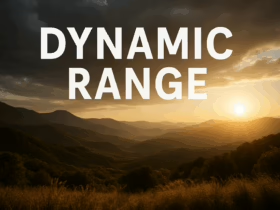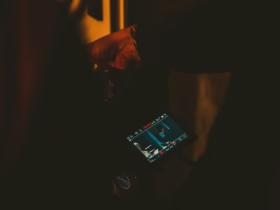Many photographers focus on lighting, exposure, and aperture, but they often overlook one essential factor: portrait photography distance. The distance between you and your subject can completely change the way a portrait feels. That’s why some portraits look flat and dull, while others appear vibrant and alive.
In a recent video by Adorama, Lindsay Adler highlights this point. She explains that distance is a key factor often missed. By considering distance and focal length together, photographers gain more control over their results. This understanding can help you achieve the exact effect you want in your portraits.
How Portrait Photography Distance Shapes Depth of Field
You already know that aperture affects depth of field. Wide apertures like f/1.4 create soft backgrounds, while narrow ones like f/16 keep everything sharp. But distance and focal length matter just as much. These three elements aperture, focal length, and distance, work together to control focus.
Lindsay suggests using a free depth of field calculator. By entering your camera model, lens, aperture, and distance, you can instantly see how much of your image will be sharp.
In her demonstration with a Canon 5D Mark III and 85mm lens at f/4, she shows that at 10 feet the depth of field is about one foot. Moving in closer to four feet reduces that depth to just 1.8 inches. Changing focal length has a similar effect. At 10 feet, switching from 50mm to 100mm reduces depth of field from three feet to 8.5 inches. This is why telephoto lenses are popular for blurred backgrounds they let you stay farther away, keeping subjects comfortable, while still achieving beautiful bokeh.
When Shallow Depth Becomes a Problem
Shallow focus isn’t always helpful. Shooting at close range with a long lens and wide aperture can make the depth of field razor thin. For instance, at four feet with a 100mm lens at f/4, the depth of field shrinks to just 1.3 inches. That’s why macro lenses produce such narrow focus.
This works well for creative shots but creates problems in group portraits. People in front may be sharp, while those behind blur out. Even with a small aperture like f/16, extreme closeness can prevent everything from being in focus. Lindsay suggests stepping back and cropping later to increase depth of field while keeping clarity. It’s a practical tip that challenges the idea that every shot must be perfected in-camera.

Portrait Photography Distance and the Distortion Trap
Distance also affects perspective and distortion, which play a huge role in portrait photography. Selfies often exaggerate noses because wide lenses distort features at close range.
When you stand too close with a wide lens, faces appear stretched and unnatural. Stepping back and using a longer lens balances features and creates more flattering portraits. For example, photographing a subject in front of a building at close range makes the person look large and the building small. Moving back with a telephoto lens compresses the scene, making both the subject and background look natural and proportional.
The key takeaway: portrait photography distance and focal length don’t just capture a person. They define how the person interacts with their surroundings. Mastering this balance helps you create portraits that feel lifelike, balanced, and engaging.






